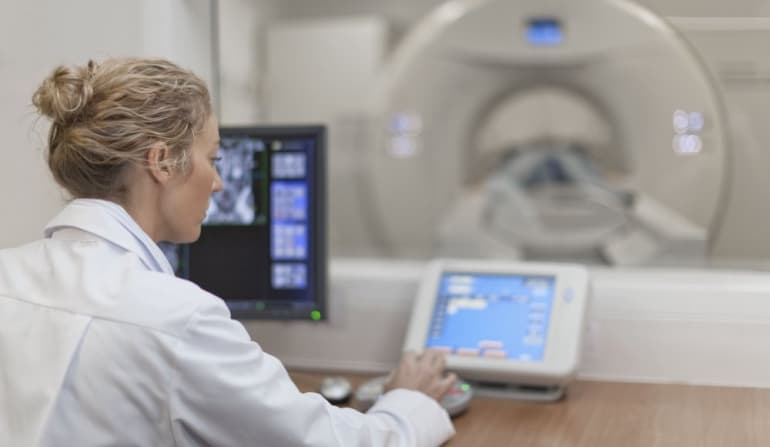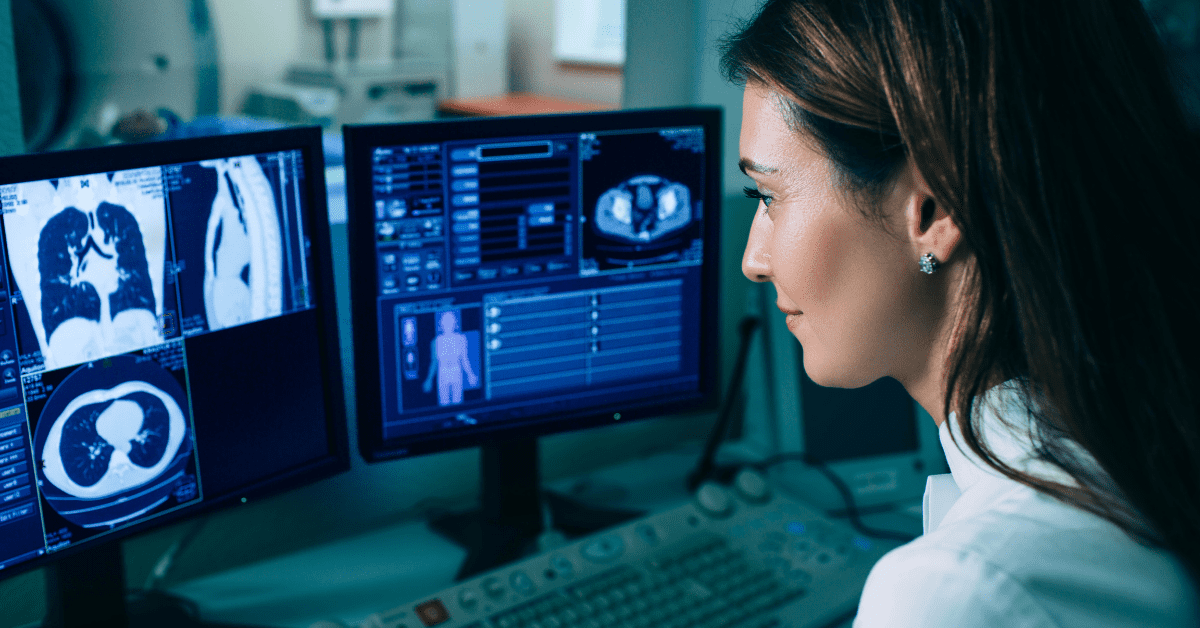CT vs. MRI: What to Use and Why
While CT and MRI are both medical imaging tools, they use different methods to produce pictures. A CT scan is ideal for larger areas, whereas MRI is better for tissue examination thanks to its more detailed images.


How CT Scan Works
CT scans work by taking multiple X-ray images at different angles to create a three-dimensional representation of an internal organ. With a computer, the X-rays are synthesized to form a 3D model of an organ system.
How MRI Scan Works
MRI uses radio waves and magnetic fields to form a detailed image of the bones and soft tissues, providing more thorough imaging than CT scans.
Which Method Works Best?
Multiple factors come into play to determine which imaging procedure is ideal and which one should be avoided due to the risk of complications.
- Patients who are pregnant should avoid CT scans due to the risk of side effects to their unborn child.
- Doctors who need more detailed images recommend MRI.
- The type of disease the patient has determines which imaging tool is better.
- The medical reason for the imaging determines whether MRI or CT is a better choice. For instance, gunshot and shrapnel victims are advised against having MRI due to the risk of injury, especially if their wound is near or at a sensitive area.
- Patients who have claustrophobia may not tolerate the standard MRI scans that use a capsule-shape bed. A possible alternative is the open upright version, although its magnet is not as strong as the traditional MRIs.
- Patients with some types of metal implants cannot have MRI scans due to the risk of injury. RF magnetic field can heat up pacemakers and long wires and cause magnetic metals such as intracranial aneurysm clips and some contraceptive devices to react.
People with cochlear implants, implanted drug infusion pumps, bone-growth stimulators, and some types of prosthetic devices are advised against having MRI scans. However, common dental implants such as Titanium, titanium alloy, and zirconia are safe for MRIs.
CT and MRI Scans: Detecting Diseases and Medical Conditions
Both CT and MRI scans can see bones, bone structures, and soft tissues, making them useful in diagnosing a wide range of diseases and medical conditions. But in terms of accuracy, MRI provides more detailed imaging, especially of the soft tissue.
“Minute” soft tissue injuries like a herniated disc–which CT scans may not be able to detect–are also best diagnosed with MRI scan thanks to its more detailed imaging capabilities.
Assuming that the patient has no implant or condition that is contraindicated with RF magnetic field, both CT and MRI scans are useful in diagnosing the following diseases and medical conditions:
- Head and facial trauma
- Ischemic and hemorrhagic stroke
- Unexplained pain in a certain body area
- Internal organs such as the bladder, pancreas, stomach, colon, small intestine, uterus, ovary, etc.
- Traumatic injuries to the bones
- Lumps or tumors
- Cancer growth
While CT and MRI scans are both used in cancer diagnosis because they can show tumors or “masses,” they are not a definitive tool. They are mainly used to detect which site is the best to collect a tissue sample for biopsy.
Once the biopsy has determined that the tumors are cancerous, both imaging techniques remain useful in identifying where the malignant cells have spread or metastasized in the body.
Situations Where CT Scan Is Better
In emergency situations like stroke, CT scans are a more helpful diagnostic tool than MRIs because they can rapidly scan the brain to identify the underlying cause of stroke (hemorrhagic vs. ischemic).
MRI scans, meanwhile, are best reserved for non-emergency situations.
Another issue with MRI is the cost barrier. In general, it costs twice as much as a CT scan, especially if it requires the use of a contrast dye (the average cost of CT is $1,200 versus $2,000 for MRIs).


Final Words
While MRI and CT scans are great diagnostic imaging tools, MRIs are better in terms of image accuracy and quality. However, people with certain metal implants, gunshot victims, and emergency situations are best diagnosed with CT.











